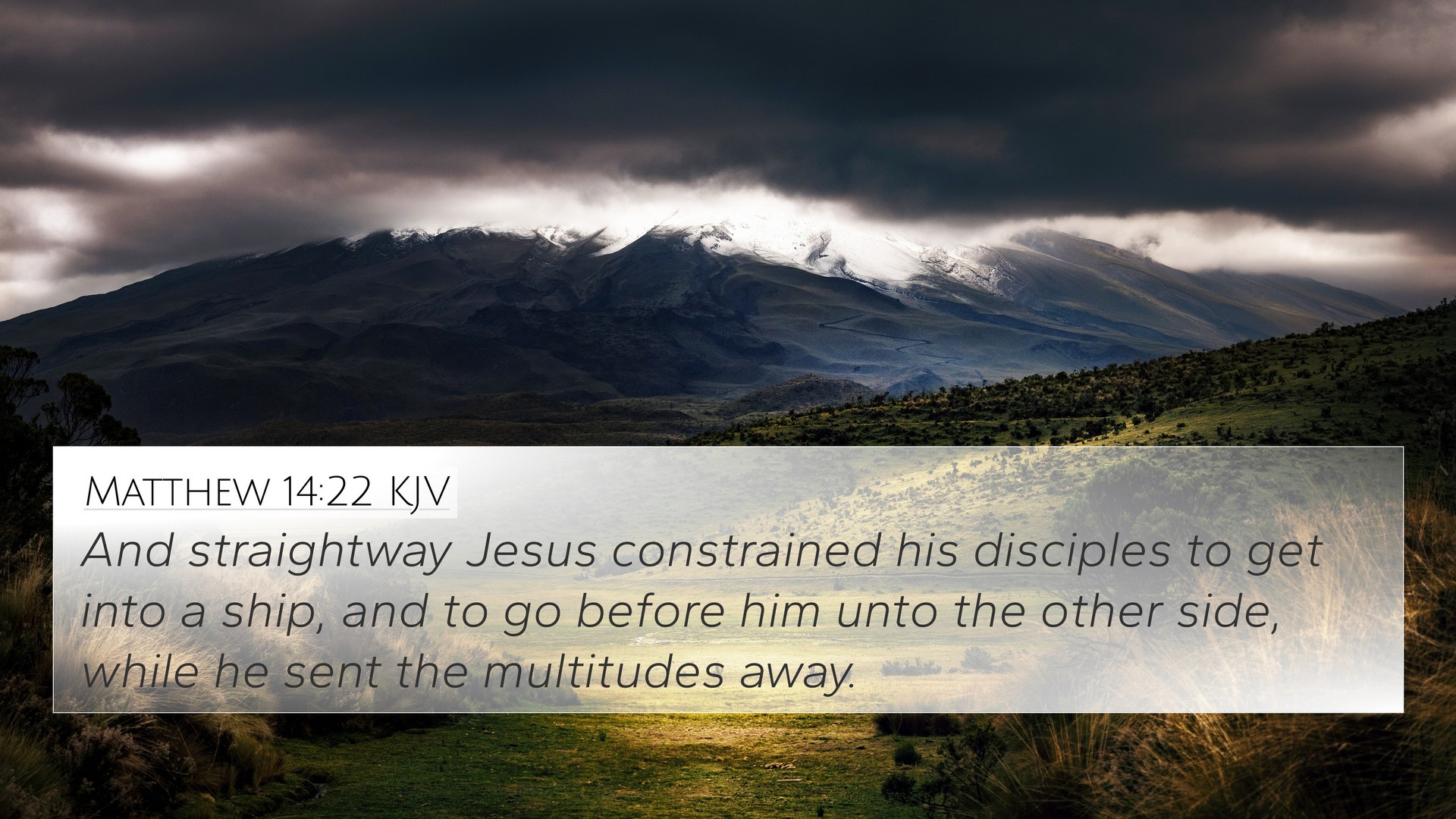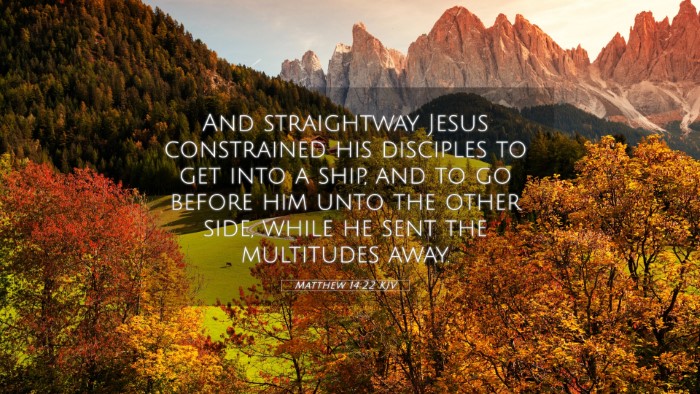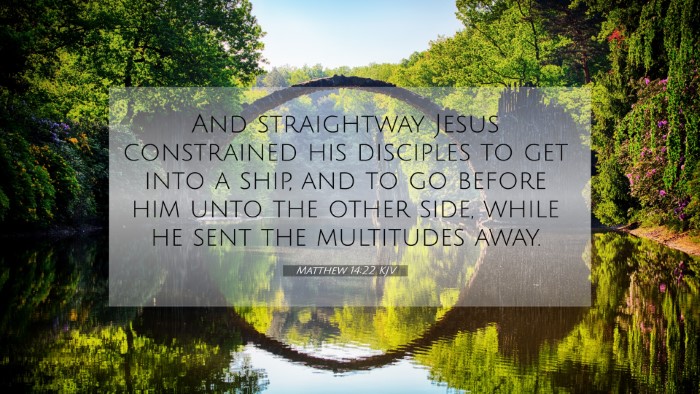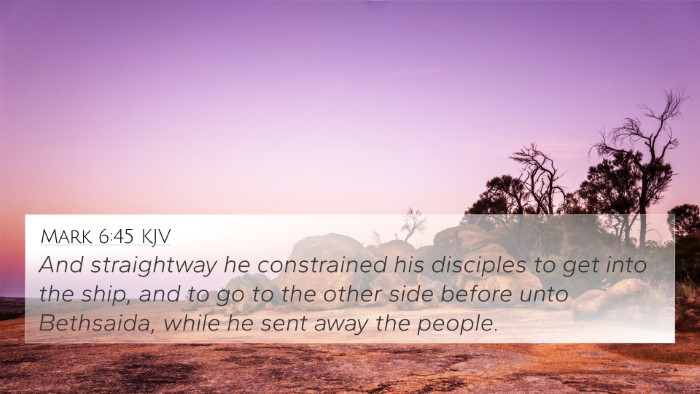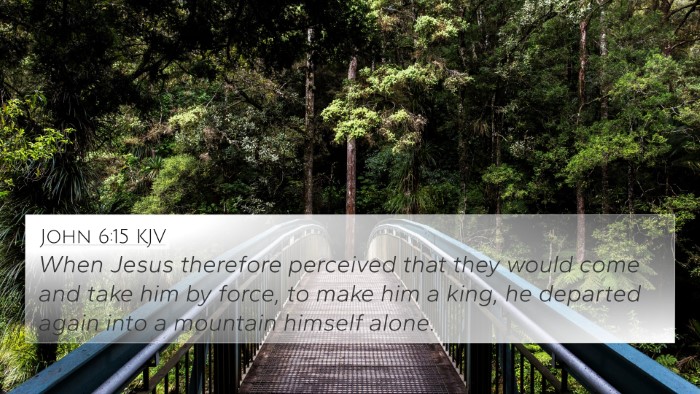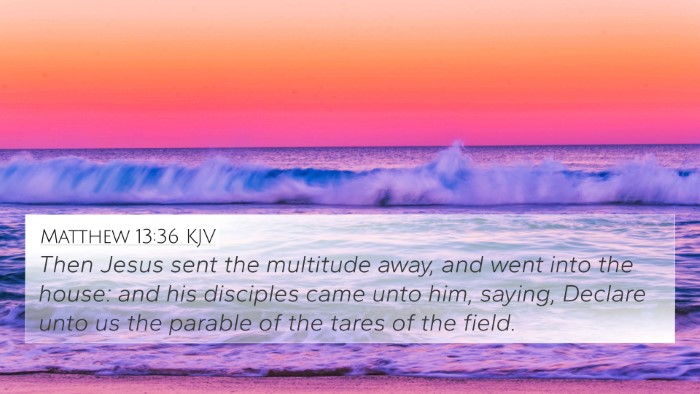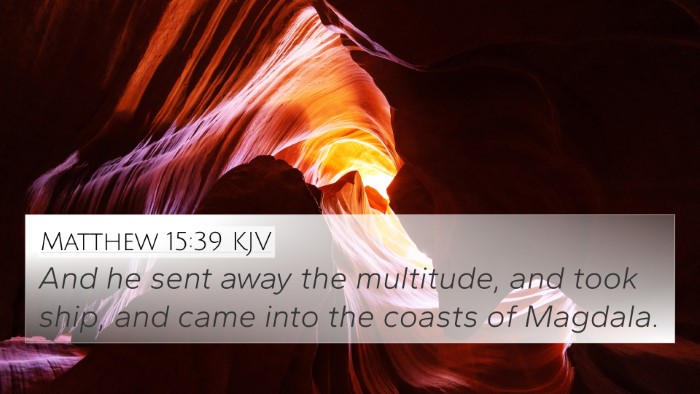Understanding Matthew 14:22
Verse: Matthew 14:22 - "Immediately Jesus made the disciples get into the boat and go on ahead of him to the other side, while he dismissed the crowd."
Summary of Matthew 14:22
This verse marks a pivotal moment in the Gospel of Matthew, showcasing Jesus' authority and the obedience of His disciples. It reveals themes of obedience, separation from the multitude, and preparation for a deeper lesson that follows.
Insights from Public Domain Commentaries
Matthew Henry's Commentary
Matthew Henry emphasizes the urgency and decisiveness of Jesus’ actions. The directive to the disciples to enter the boat signifies a necessary distance from the crowd after the miraculous feeding of the five thousand, allowing for a time of reflection and personal instruction. Here, Henry notes that obedience leads to spiritual growth, as the disciples are guided by Jesus into a situation where their faith will be tested.
Albert Barnes' Notes on the Bible
Barnes points out the importance of the timing in this passage. The phrase "immediately" suggests that Jesus took decisive action following the miracle. He highlights that Christ was concerned for the disciples’ well-being and sought to strengthen their faith through solitude and reflection. This event serves as a preparation for the challenges to come, particularly during the storm when they would need to rely on His presence and power.
Adam Clarke's Commentary
Clarke reflects on the physical and spiritual separation presented in this verse. He suggests that Jesus sent the disciples ahead to a physical destination while He took time to pray, which illustrates the importance of solitude in the life of a believer. Clarke asserts that this act of sending the disciples away was also a display of Christ’s authority over all situations, teaching that even in separation, His presence is always near.
Thematic Connections and Cross-References
Matthew 14:22 establishes several thematic connections with other Bible verses, revealing deeper insights into the life and ministry of Jesus, as well as the nature of His followers. Recognizing these relationships can enhance one's understanding through engaging in comparative Bible verse analysis and linking Bible scriptures.
- Mark 6:45-46: This parallel emphasizes the same command to get into the boat and Jesus' retreat to pray, reinforcing the theme of solitude.
- John 6:15: This verse highlights Jesus’ withdrawal from the crowd after the feeding of the 5,000, showing a tactical approach to managing His ministry.
- Matthew 17:1: The notion of separation for spiritual priorities is echoed in the transfiguration, where Jesus takes Peter, James, and John apart for a revelation moment.
- Matthew 8:23-27: This account of Jesus calming the storm connects as it directly follows the disciples' obedience and reliance on him amidst chaos.
- Matthew 26:36-39: The motif of Jesus’ retreats for prayer is further established, illustrating His dependence on the Father.
- Luke 6:12: Here, Jesus spending the night in prayer before making significant decisions underscores the importance of seeking divine guidance.
- Philippians 4:6-7: This passage encourages believers to bring their concerns to God, much like the disciples learned to depend on Jesus during their trials.
- Hebrews 11:1: The theme of faith, which the disciples needed to exercise in the midst of their challenges, correlates with their experience on the sea.
- 1 Peter 5:7: The disciples’ experiences with Jesus highlight the concept of casting anxieties on Him, relevant in understanding divine care.
- Isaiah 41:10: God's promise of support in times of fear resonates with the courage the disciples needed as they journeyed through uncertainty.
Conclusion
Matthew 14:22 serves as a pivotal scripture that not only highlights Jesus' authority and love for His disciples but also encourages believers to find solace in Him during times of separation and challenge. By examining cross-references and thematic connections, one can gain a richer understanding of Jesus’ teachings and the experiences of His followers, enhancing Bible study methods.
In exploring this verse and its connections, one is reminded of the importance of cross-referencing Biblical texts to draw out deeper insights and practical applications for faith and life.
Tools for Bible Cross-Referencing
For those looking to delve deeper into cross-referencing Bible scriptures, consider using a bible concordance or a bible cross-reference guide. These resources are invaluable for effectively connecting themes, identifying connections between Old and New Testament passages, and conducting comprehensive Bible cross-reference materials for a thorough understanding of scripture.
